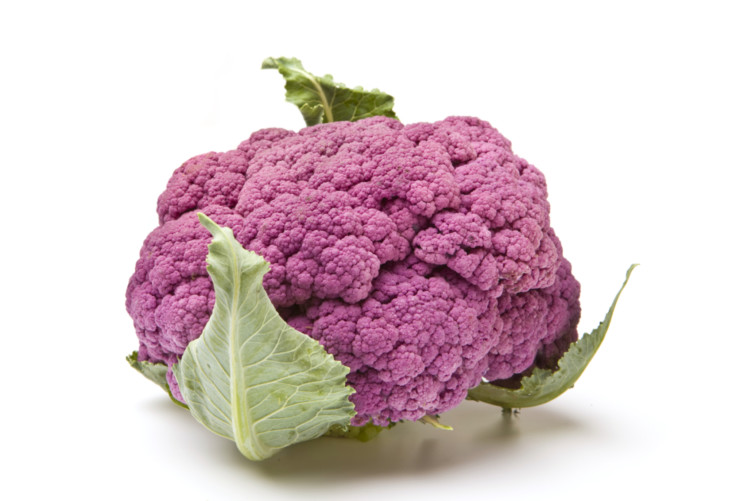A Bulletproof Look At Cauliflower

Let’s talk about cauliflower. This versatile vegetable’s nutrient profile and easy-to-cook nature make it a staple of the Bulletproof Diet. You can make cauliflower into a dozen different dishes, from cauliflower steaks to cauliflower rice to creamy cauliflower bacon mash (you’ll find all three of those recipes in Bulletproof: The Cookbook. Cauliflower bacon mash trumps mashed potatoes any day).
In this post, we’ll take a closer look at the cauliflower nutrient profile and talk about how to best prepare it. There’s even a delicious recipe for Lime Cilantro Cauliflower “Not Rice” for you to try.
Cauliflower is chock full of nutrients
Cauliflower is low in carbs and high in vitamin C, potassium, calcium, and fiber. It also has a moderate amount of vitamin K1 and contains sulforaphane, glucosinolates, carotenoids, and indole-3-carbinol. Here’s what each of those does:
-
Vitamin C
You need vitamin C for collagen and connective tissue formation. Your body also uses it to manufacture glutathione, enhance immune function, and prevent free radical damage.
Vitamin C is sensitive to heat, so you’ll lose a lot of cauliflower’s vitamin C if you cook it. You can help preserve vitamin C by cooking cauliflower at lower temperatures, or by eating it raw. More on raw versus cooked cauliflower in a minute.
-
Sulforaphane
Sulforaphane is what gives your kitchen that funky smell when you’re cooking cruciferous vegetables like broccoli and cauliflower. This compound has powerful anti-inflammatory and anti-cancer properties[3]. It also works with glutathione to remove toxins from human cells.[4]
-
Glucosinolates and Indole-3 Carbinol
Like sulforaphanes, glucosinolates are sulfur-containing compounds that give off a pungent aroma. Glucosinolates are broken down (through food prep, digestion, and chewing) to form biologically active compounds — indoles, nitriles, thiocyanates, and isothiocyanates. [5] Studies show that these compounds, especially indole-3-carbinol, inhibit the development of cancer in rats and mice.[6, 7]. Glucosinolates also protect cells from DNA damage and have anti-inflammatory effects.
There’s some concern about glucosinolates inhibiting thyroid function, particularly in iodine-deficient people with autoimmune issues. If you fit that bill, stick to cooked cauliflower, or try a small amount of raw cauliflower and see how it makes you feel. If you don’t have an autoimmune issue, you’re probably fine eating raw cauliflower, provided you aren’t eating tons of it.
-
Vitamin K1
Cauliflower has a moderate amount of vitamin K1 (31µg/100g[1]). Your body converts some K1 into K2, but humans don’t convert it very efficiently and we don’t absorb much dietary K1. That’s why I prefer to get my K2 from grass-fed animal products like butter and organ meat.
Still, K1 will give you a modest boost in K2. Cooking doesn’t damage K1, and studies show microwaving can even enhance its absorption (but that’s definitely not a compelling enough reason for me to start using the microwave[2]).
How to Cook Your Cauliflower
Many of the beneficial nutrients found in cauliflower can quickly become damaged if you don’t store or cook it properly. Your best bets for cooking cauliflower are:
- Steam the cauliflower al dente
- Bake at a low temperature (below 320°F)
- Boil the cauliflower
- Sauté at low to medium temperatures
There are several superb cauliflower recipes in Bulletproof: The Cookbook. Here’s one of them. It’s an excellent alternative to rice if you’re watching your carbs.
Recipe: Lime-Cilantro Cauliflower “Not-Rice”
It can be a little tricky to get the right texture here, so play around with a grater and/or a food processor until the cauliflower is roughly the size and shape of rice. This is a great side dish with a surprising amount of flavor. It goes nicely with fish or meat.
Ingredients:
- 1 head cauliflower
- 2 tablespoons grass-fed unsalted butter Juice from 1 whole lime
- 2 tablespoons Brain Octane Oil
- 1/2 cup chopped fresh cilantro
- sea salt to taste
- 1 spring onion, chopped (optional)
Instructions:
- Grate the cauliflower or use a food processor to pulse it into the right texture.
- Heat a large sauté pan to medium and melt the butter. when the butter is melted, add the riced cauliflower. Don’t be afraid to crowd the pan, as it will aid in the cooking process by creating a steamer effect. Caution: You don’t want to brown the cauliflower. Cook it gently for 5 to 10 minutes, stirring and turning over often.
- Once the cauliflower is cooked through, turn off the heat and add the lime juice, oil, cilantro, and salt to taste. Mix evenly in the pan and transfer to a dish for serving. garnish with spring onion (if using). Enjoy!
[1] http://www.ncbi.nlm.nih.gov/pubmed/8642453
[2] http://www.ncbi.nlm.nih.gov/pubmed/18314957
[3] http://www.ncbi.nlm.nih.gov/pmc/articles/PMC2862133/
[4] www.ncbi.nlm.nih.gov/pubmed/11988104
[5] http://www.ncbi.nlm.nih.gov/pubmed/18458837
[6] http://www.ncbi.nlm.nih.gov/pubmed/12094621
[7] http://www.ncbi.nlm.nih.gov/pubmed/11139137



